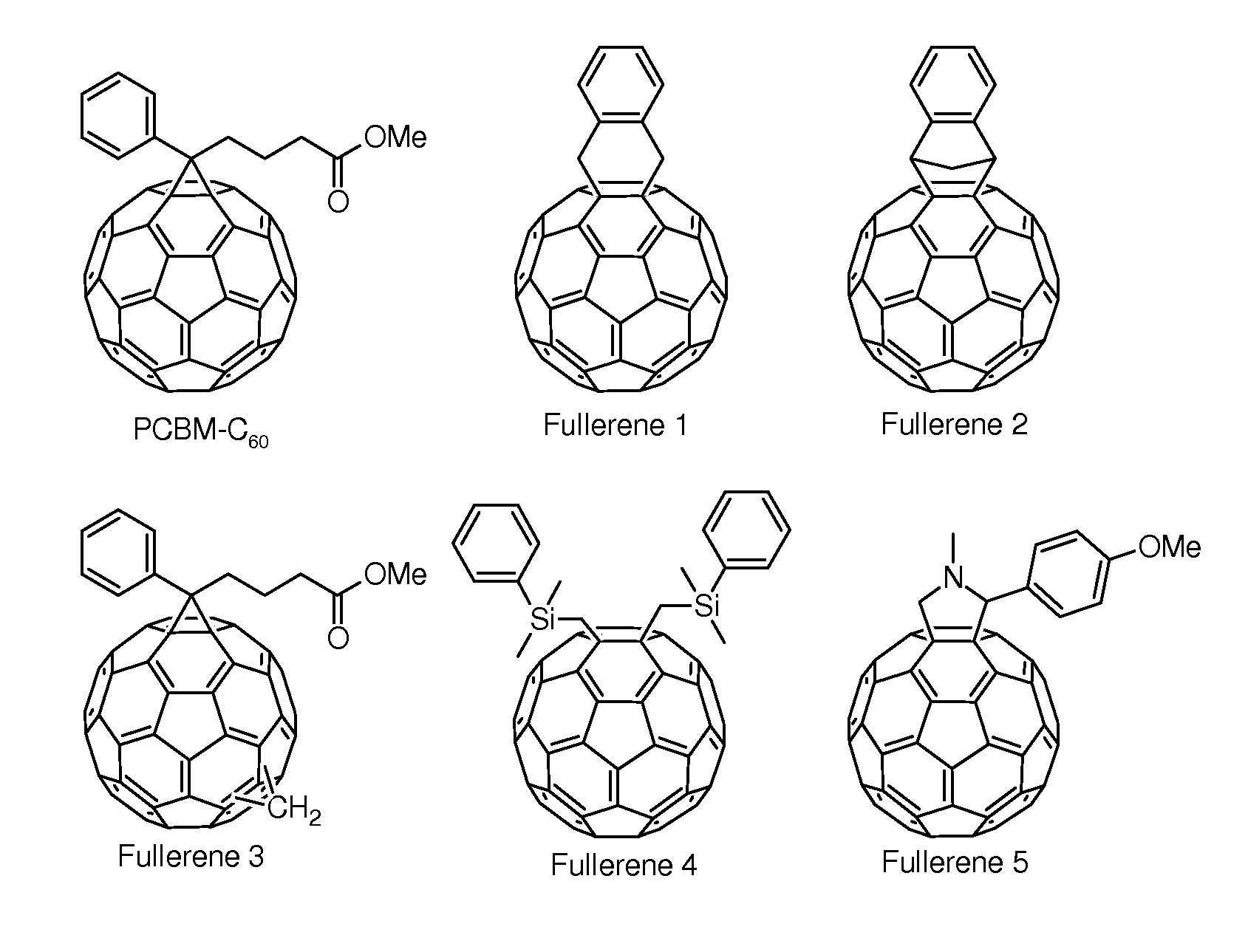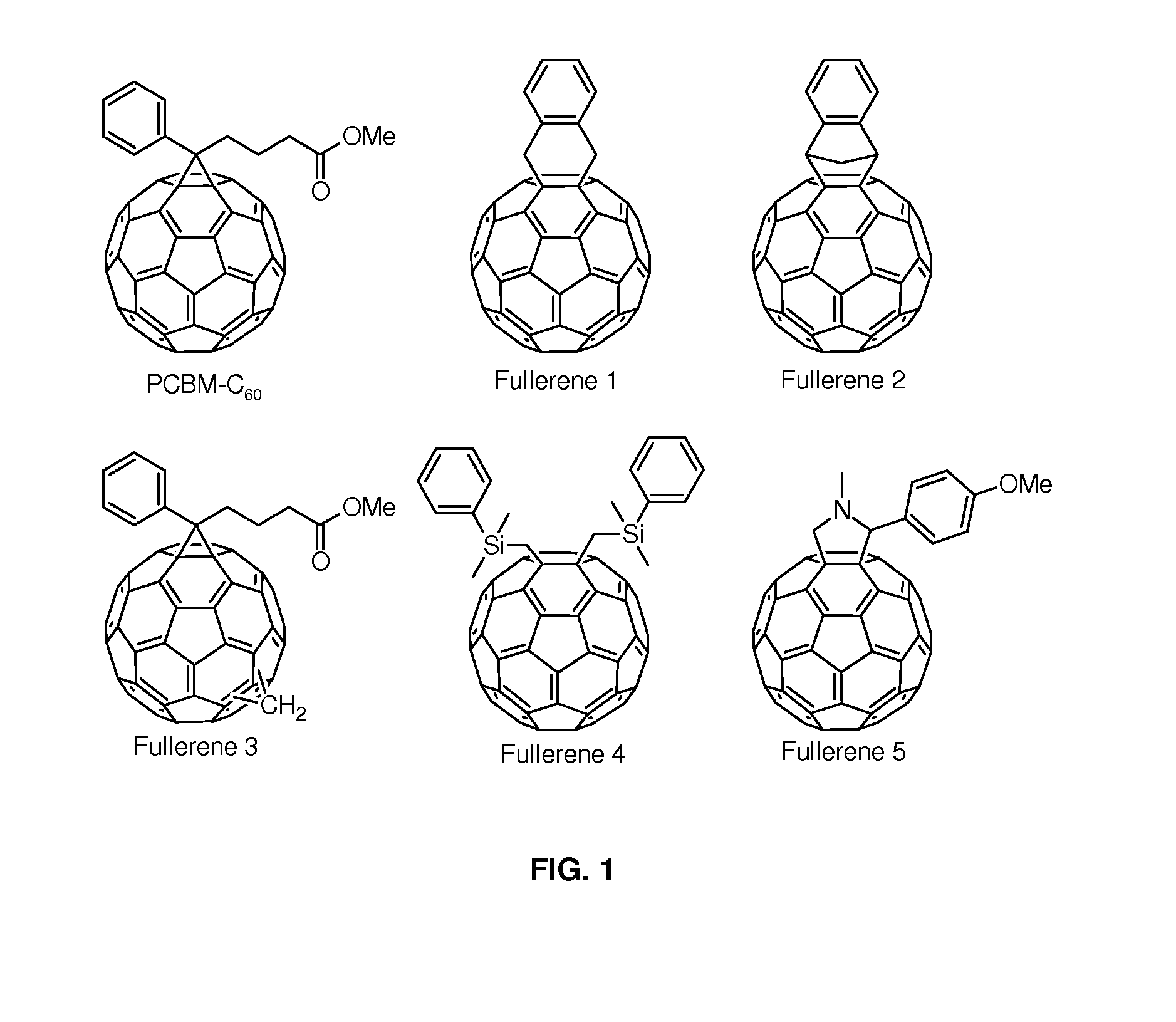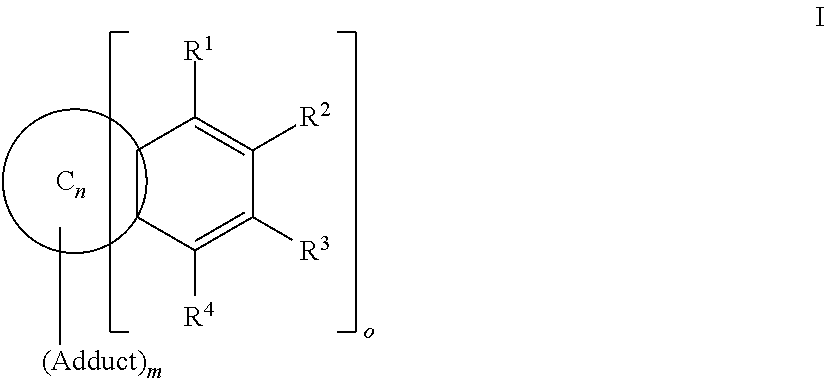Cyclohexadiene fullerene derivatives
a technology of cyclohexadiene and derivatives, applied in the field of fullerene derivatives, can solve the problem that the development of n-type semiconductors has been limited to a few selected candidates
- Summary
- Abstract
- Description
- Claims
- Application Information
AI Technical Summary
Benefits of technology
Problems solved by technology
Method used
Image
Examples
example c2.2
2,5-Bis(trimethylsilyl)thiophene-1,1-dioxide
[0247]
[0248]2,5-bis(trimethylsilyl)thiophene (30 mmol, 6.96 g) is dissolved in 600 cm3 of dry methylene chloride, and m-MCPA (90 mmol, 20.17 g, 77% purity) is added stepwise. The mixture is stirred at 21° C. for 24 hours and filtered and washed first with 10% NaHCO3 and then with distilled water. The aqueous layer is extracted with methylene chloride (3×50 cm3) and the combined organic extracts are dried with anhydrous Na2SO4 and concentrated by rotary evaporation to give colorless oil. The oil obtained in this way is chromatographed on silica gel using hexanes / methylene chloride 50:50. A total of 5.1 g (65% yield) of 2,5-bis(trimethylsilyl)thiophene-1,1-dioxide as a white crystalline material is obtained. Mass (m / z, DART): 261.08 ([M+H]+).
example c2.3
2,5-Diiodothiophene-1,1-dioxide
[0249]
[0250]2,5-Bis(trimethylsilyl)thiophene-1,1-dioxide (9.6 mmol, 2.5 g) is reacted with iodine (I2) (38.4 mmol, 9.75 g) in the presence of AgBF4 (57.6 mmol, 11.2 g) in methylene chloride (200 cm3) at 0° C. for 1 h. The reaction is quenched with ice water, then washed three times with sodium bisulfite (NaHSO3) to remove un-reacted iodine, followed by the NaHCO3 solution, brine, and the combined organic extracts are dried with anhydrous Na2SO4. After concentrated by rotary evaporation, the crude material is recrystallized from hexane to give white solid (2.9 g, 82%).
example c2.4
2Ethyl-5-tri-n-butylstannyl thiophene
[0251]
[0252]Under a argon atmosphere, a solution of 2-ethyl-thiophene (40 mmol, 4.63 g) in 50 cm3 dry tetrahydrofuran is cooled to −78° C., then n-butyllithium (n-BuLi) (48 mmol, 30 cm3, 1.6 M in hexanes) is added dropwise. The solution is stirred at −78° C. for 60 minutes and then is warmed to room temperature for 30 minutes. After the solution is cooled to −78° C. again, tributylstannyl chloride (SnBu3C1) (52.8 mmol, 17.2 g) is added dropwise and the reaction mixture is stirred for 60 minutes at −78° C. then allowed to warm to room temperature over another 12 hours. The reaction is quenched with water (100 cm3) and the organic layer separated. The aqueous layer is extracted with methylene chloride (3×50 cm3) and the combined organic extracts are dried with anhydrous Na2SO4 and concentrated by rotary evaporation to give yellow oil. This oil is directly used for the next step without further purification. 1H NMR (300 MHz, CDCl3) δ: 6.99 (d, 1H), ...
PUM
| Property | Measurement | Unit |
|---|---|---|
| Electrical conductor | aaaaa | aaaaa |
| Transport properties | aaaaa | aaaaa |
| Light | aaaaa | aaaaa |
Abstract
Description
Claims
Application Information
 Login to View More
Login to View More - R&D
- Intellectual Property
- Life Sciences
- Materials
- Tech Scout
- Unparalleled Data Quality
- Higher Quality Content
- 60% Fewer Hallucinations
Browse by: Latest US Patents, China's latest patents, Technical Efficacy Thesaurus, Application Domain, Technology Topic, Popular Technical Reports.
© 2025 PatSnap. All rights reserved.Legal|Privacy policy|Modern Slavery Act Transparency Statement|Sitemap|About US| Contact US: help@patsnap.com



